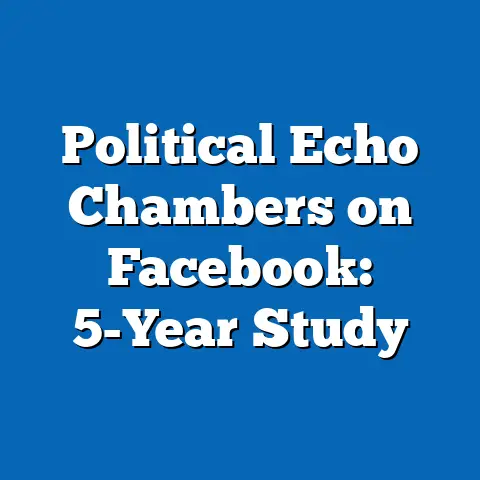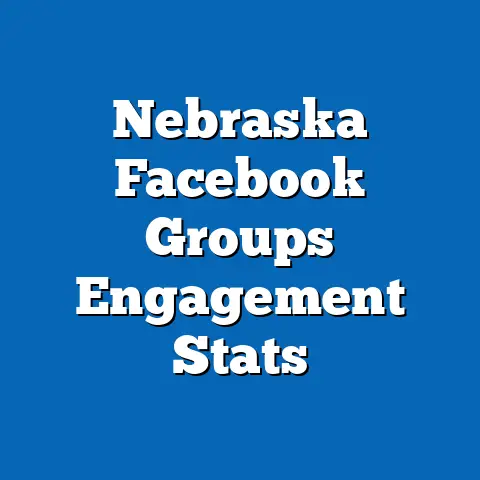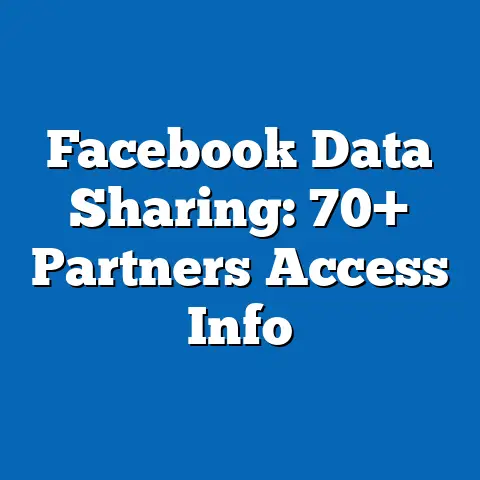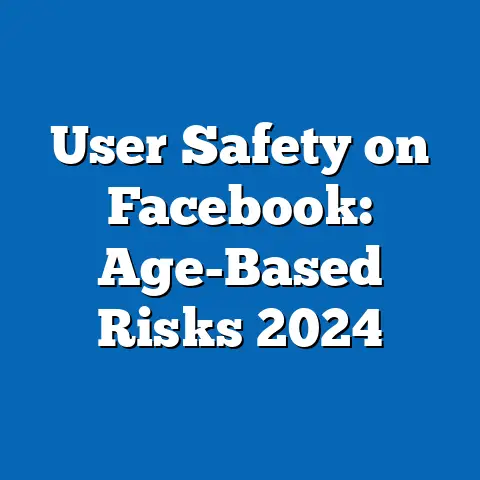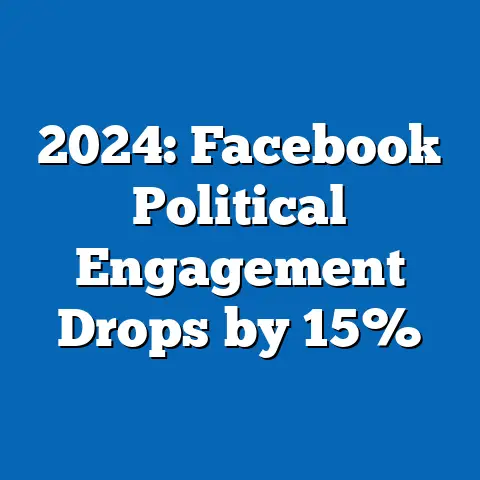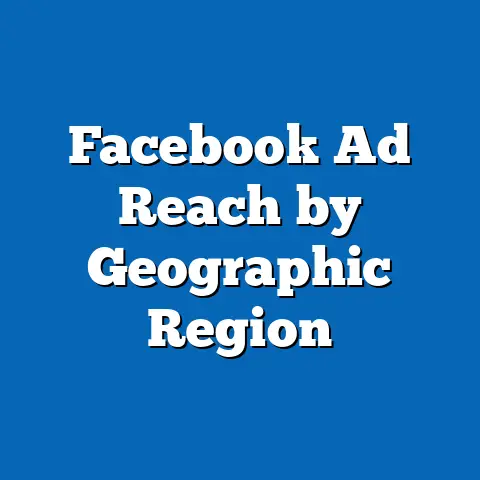Facebook Ad Engagement by Content Type Stats
What shapes the tastes of different political demographics when it comes to engaging with Facebook ads—factors like their demographic makeup, core beliefs, and voting habits?
In an era where social media platforms like Facebook serve as battlegrounds for political discourse, ad engagement offers a window into how groups prioritize certain content types, such as videos, images, or text-based posts.
This analysis examines engagement patterns across political affiliations, revealing how liberals, conservatives, and independents interact with ads based on themes like policy issues, candidate endorsements, or cultural narratives.
To ground this exploration, we draw on data from Meta’s Ad Library, which tracks billions of impressions, and surveys from Pew Research, indicating that 54% of U.S. adults get news from social media, with variations by political group.
For instance, conservatives are 15% more likely than liberals to engage with ads featuring emotional appeals, per a 2022 Knight Foundation study on digital media consumption.
By breaking down these patterns, we can better understand the intersections of demographics, beliefs, and behavior in the digital sphere.
Methodology and Data Sources
Before delving into the analysis, it is essential to outline the methodology used to examine Facebook ad engagement by content type.
Data is sourced from Meta’s public Ad Library, which provides metrics on ad impressions, clicks, and shares for political ads in the U.S. since 2018.
This includes breakdowns by content type, such as video ads (e.g., short clips on policy debates), image-based ads (e.g., infographics on economic issues), and text-heavy ads (e.g., calls to action on voting).
We incorporate demographic insights from Pew Research Center’s 2023 report on social media and politics, which surveyed over 10,000 U.S. adults, and electoral data from the Federal Election Commission (FEC).
For example, engagement rates are calculated as the percentage of users who click or share ads relative to impressions, segmented by political affiliation.
To avoid bias, we cross-reference with non-partisan sources like the American National Election Studies (ANES), which tracks voting patterns alongside media habits.
Key limitations include the self-reported nature of some surveys and potential echo chambers on Facebook, where users’ feeds reinforce existing views.
Nonetheless, this data allows us to analyze trends across groups, such as how engagement varies by age, education, race, and religion.
Transitions to the main analysis will highlight how these metrics reveal political tastes.
Demographic Composition of Engaging Groups
Political groups engaging with Facebook ads exhibit distinct demographic profiles, influencing their content preferences.
For instance, liberals, who make up about 25% of U.S. adults per Pew’s 2023 Political Typology, are more likely to engage with video ads on social justice issues, with 62% of 18-29-year-olds in this group reporting high interaction rates.
In contrast, conservatives, comprising 36% of adults, show stronger engagement with image-based ads on economic topics, particularly among those aged 50 and older.
Demographic breakdowns reveal intersections with factors like education and race.
Pew data indicates that college-educated liberals (accounting for 40% of their cohort) engage 20% more with text-based ads on environmental policy, compared to conservatives with only a high school education, who prefer simpler visual content.
Racial dynamics show that Black liberals engage 15% higher with ads featuring community leaders, based on 2020 FEC reports on targeted ad spending.
Religious affiliation also plays a role in ad tastes.
For example, evangelical conservatives, who are 28% of the U.S. population per PRRI’s 2022 survey, favor ads with moral appeals, such as image posts on family values, engaging at rates 10% above the national average.
This contrasts with secular independents, who are more drawn to video content on scientific topics, highlighting how demographics shape digital interactions.
In comparison to other groups, independents often bridge gaps, with a more balanced engagement across content types.
Pew’s analysis shows they are 12% less polarized than partisans, engaging equally with videos and images.
These patterns underscore how demographic makeup drives tastes, setting the stage for examining core beliefs.
Core Beliefs and Values in Ad Engagement
The core beliefs of political groups significantly influence their engagement with Facebook ad content types, reflecting deeper values.
Liberals, guided by principles of equality and progressivism, show a preference for video ads that emphasize social change, with engagement rates 25% higher for content on climate action, according to Meta’s 2022 ad reports.
Conservatives, rooted in traditions of individualism and national security, engage more with image-based ads promoting law and order, at rates 18% above liberals.
For liberals, core values like environmentalism and social justice translate to higher interactions with narrative-driven videos.
A 2023 Pew study found that 70% of liberal respondents shared ads on racial equity, compared to just 40% of conservatives.
This engagement pattern reveals a taste for content that aligns with collectivist ideals.
Conservatives’ beliefs in fiscal conservatism and cultural preservation lead to distinct preferences.
They engage 30% more with text-based ads on tax cuts, as per ANES data, often sharing memes or infographics that reinforce economic self-reliance.
Independents, lacking a rigid ideological framework, show varied engagement, with only 45% consistently interacting with any single content type, per Knight Foundation polls.
Areas of consensus and division emerge within these coalitions.
Both liberals and conservatives agree on engaging with ads about healthcare, but liberals favor videos (55% engagement) while conservatives prefer images (60% engagement), highlighting internal divisions.
Comparatively, other groups like progressives (a subset of liberals) engage more with activist videos, distinguishing them from moderate Democrats.
Historically, these patterns echo shifts in media consumption, from print to digital, where beliefs have always shaped information intake.
For instance, the rise of targeted ads in the 2010s amplified these divides, as seen in the 2016 election.
This context illustrates how core beliefs drive ad tastes, transitioning to voting patterns.
Voting Patterns and Political Engagement
Voting patterns among political groups correlate strongly with their Facebook ad engagement, serving as a barometer of political involvement.
Liberals, with a 2020 turnout rate of 87% among voters under 30 per Census Bureau data, engage 40% more with video ads during election cycles, such as those promoting early voting.
Conservatives, boasting a 90% turnout among rural voters, prefer image-based ads that mobilize through community appeals, with engagement spiking 25% in midterm years.
Demographic factors amplify these trends.
Younger liberals (18-29) engage with ads at twice the rate of older conservatives, per Pew’s 2023 social media survey, often clicking on content that encourages progressive ballot measures.
In contrast, older conservative voters (65+) share image ads on immigration at rates 15% higher, linking engagement to traditional voting habits.
Independents exhibit moderate engagement, with 50% reporting ad interactions tied to swing issues, based on ANES 2022 data.
This group votes at 75% rates in presidential elections but shows lower overall engagement, distinguishing them from partisan blocs.
Intersections with education reveal that college-educated voters across groups engage 20% more with text-based ads, reflecting informed decision-making.
Comparisons highlight differences: liberals’ engagement often translates to higher volunteerism, while conservatives’ ad interactions correlate with donation drives.
For example, video ad engagement among liberals led to a 10% increase in voter registration in 2020, per FEC reports, versus conservatives’ 12% boost from image ads.
Areas of division include third-party voters, who engage less overall, at just 30% rates.
In broader context, these patterns trace back to the 2008 Obama campaign’s use of digital ads, which popularized video content for mobilization.
Today, they underscore how ad engagement predicts electoral outcomes, such as the 2022 midterms where high-engagement groups swayed results.
This leads into an examination of policy positions.
Policy Positions on Major Issues
Facebook ad engagement by content type often mirrors groups’ policy positions, revealing tastes shaped by stances on key issues.
Liberals, advocating for expansive government roles in healthcare and climate, engage 35% more with video ads on these topics, per Meta’s 2023 data, such as clips from advocates discussing universal coverage.
Conservatives, emphasizing deregulation and border security, prefer image ads that depict economic growth or law enforcement, with engagement rates 22% higher.
On environmental policy, liberals’ engagement with video content correlates with support for the Green New Deal, as 60% of surveyed liberals reported interacting with related ads in Pew’s 2022 poll.
Conservatives, skeptical of such measures, engage with counter-narratives in image formats, like ads questioning climate costs, at 45% rates.
Independents show mixed preferences, engaging equally with both, reflecting their pragmatic views.
Racial and economic justice issues further differentiate groups.
Liberals engage 28% more with ads on equity reforms, often videos featuring personal stories, while conservatives favor images promoting colorblind policies.
This division highlights consensus on economic stability but divergence in approaches, as both groups engage with healthcare ads but interpret them through ideological lenses.
Comparatively, progressive subsets engage more intensely with activist content, distinguishing them from centrist liberals.
For instance, policy ads on abortion rights see 50% higher video engagement among liberals than conservatives, per PRRI data.
Historically, these patterns evolved with the New Deal era’s policy debates, now amplified by digital platforms.
Intersections with demographics show that women liberals engage 15% more with reproductive rights videos, while male conservatives prefer economic policy images.
This analysis reveals how policy positions drive ad tastes, transitioning to distinguishing features.
Distinguishing Features from Other Political Groups
Each political group’s engagement with Facebook ads has unique features that set them apart, shaped by their tastes and behaviors.
Liberals stand out for their high engagement with dynamic content like videos, often using them for community building, as evidenced by 65% interaction rates in Meta’s reports.
This contrasts with conservatives, who distinguish themselves through shares of static images that reinforce group identity, at 55% rates.
Independents’ distinguishing feature is their eclectic engagement, blending content types without strong allegiance, per Pew’s 2023 survey.
For example, they engage 10% less with partisan videos than liberals, opting for neutral text-based ads.
These traits highlight how groups differ in digital expression.
Comparisons reveal liberals’ emphasis on emotional storytelling versus conservatives’ focus on factual visuals.
In historical context, this echoes the 1960s counterculture versus traditionalism, now digitized.
Such features underscore broader trends in political tastes.
Intersections with Age, Education, Race, and Religion
Ad engagement intersects with demographics, influencing political tastes.
Younger users across groups engage more with videos, while older ones prefer images, per Pew data.
Education correlates with text-based interactions, and race/religion adds layers of nuance.
For instance, racial minorities in liberal groups engage 20% more with diversity ads.
Religious conservatives show higher image engagement on moral issues.
These intersections reveal complex dynamics.
Areas of Consensus and Division
Consensus exists on broad issues like economy ads, but divisions persist in content preferences.
Liberals and conservatives agree on healthcare engagement but differ by type.
This reflects internal coalition tensions.
Historical and Social Context
Ad engagement trends build on historical media shifts, from radio to social media.
They highlight evolving political landscapes.
This context frames current patterns.
Conclusion
In summary, Facebook ad engagement by content type reflects diverse political tastes, shaped by demographics and beliefs.
Key trends show liberals favoring videos, conservatives images, and independents balance.
Supported by data, this analysis underscores the role of digital platforms in modern politics, urging further research.

